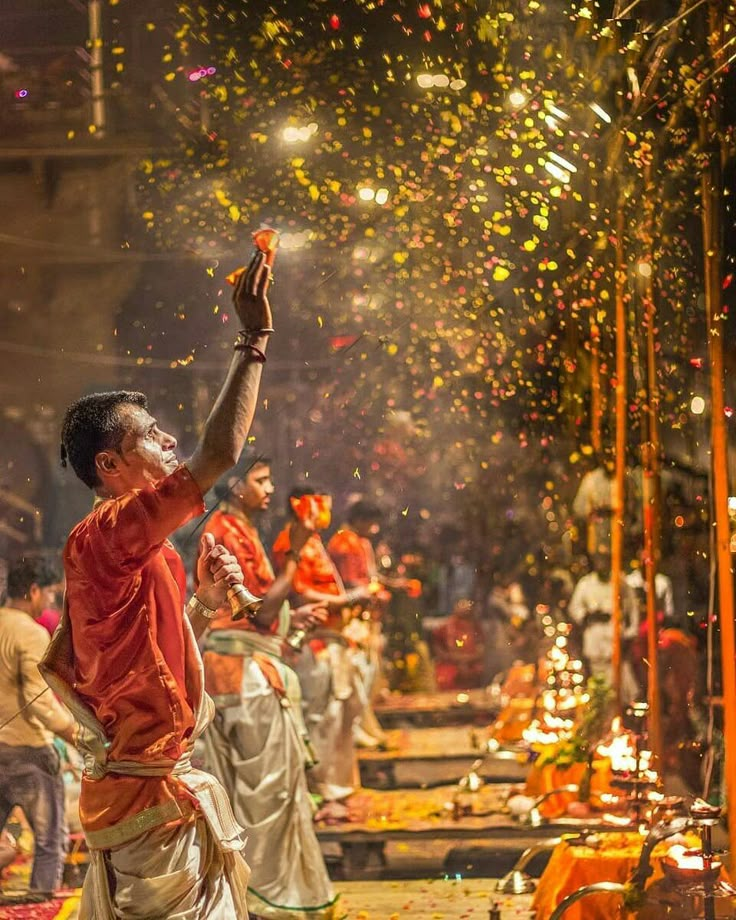Varanasi Classical Music Heritage: Gharanas, Legends & Living Traditions
Why this matters (Updated Oct 2025): Ganga Mahotsav and Dev Deepawali spike interest, but most visitors miss the deeper thread – Varanasi as a 3,000‑year continuous laboratory of raga, rhythm and devotional expression.
1. Core Pillars of Varanasi's Musical Identity
| Pillar | Essence | Distinction |
|---|---|---|
| Benaras Gharana (Tabla) | Power + clarity + resonance | Rounded bayan strokes, rich open tones |
| Thumri Tradition | Semi-classical emotive lyricism | Abhinaya + subtle micro‑ornaments |
| Shehnai Legacy | Temple-to-concert elevation | Bismillah Khan globalized sound |
| Dhrupad Echo | Ancient austere form survived in pockets | Meditative alap gravitas |
| Folk → Classical Osmosis | Kajri, Chaiti, Hori influences | Seasonal emotional color |
2. The Benaras (Banaras) Gharana – Rhythm Architecture
Distinct hallmarks:
- Open resonance on dayan + deep meend on bayan
- Heavy use of rela patterns with cascading speed control
- Staged crescendo (layakari layering) for narrative build
- Guru–shishya immersion around Akhadas (practice circles)
Key exponents (generations): Ram Sahai → Anokhelal Mishra → Mahapurush Mishra → Kumar Bose / Kishan Maharaj lineage.
3. Thumri & Semi-Classical Aesthetics
"Rasa first, speed later." Varanasi thumri = spacious bol‑banav style, sighing meend, delicate murki, emotional improvisation around poetic fragments (Radha–Krishna / Ganga imagery). Girija Devi modernized broadcast appeal while preserving vilambit emotive core.
Forms influenced: Dadra, Chaiti, Hori, Kajri (seasonal rain / spring mood insertion into concert sets).
4. Shehnai Elevation – From Ritual to Revered Stage
Ustad Bismillah Khan repositioned shehnai from marriage / temple soundscape to concert legitimacy. Signature aesthetics:
- Unhurried alap unfolding like morning mist on ghats
- Vocal‑like gamak + sustained breath arches
- Devotional undertone even in secular ragas
Spiritual anchor: Daily practice circuits across Vishwanath lanes → Ganga → temple courtyards.
5. Instrument Ecosystem & Craft Lanes
| Lane / Area | Specialty | Notes |
|---|---|---|
| Dashashwamedh Back Lanes | Tabla / shehnai repair | Small family shops (ask before photos) |
| Bengali Tola | Harmonium reeds / tuning | Calibrated for thumri pitch flexibility |
| Vishwanath Gali Offshoots | String (sitar / sarangi) bridges | Seasonal humidity prep |
| Chowk Area | Brass & percussive shells | Raw casting → finishing elsewhere |
Buying Tips:
- Test sustain (mezrab strokes / bayan resonance) morning & evening (humidity shift)
- Request moisture‑season adjustments if visiting monsoon vs winter
- Insist on written note: wood seasoning months + skin origin (goat vs buffalo)
6. Learning Hubs & Pedagogy
Traditional Akhada model persists: immersive residential mentorship; tal cycle recitation before hand technique.
Modern overlays:
- Weekend modular workshops for travelers (intro tabla 60–90 mins)
- Digitally streamed riyaz logs (YouTube micro‑pedagogy)
- Hybrid vocal + yoga breath alignment sessions (performance stamina focus)
7. Contemporary Fusion & Preservation Tension
| Trend | Upside | Risk |
|---|---|---|
| EDM + Raga Collabs | Youth reach | Rasa dilution |
| Short‑form Reels Teaching | Accessibility | Oversimplification |
| Festival Curated Jugalbandi | Cross-pollination | Surface synergy only |
| CSR-funded Archives | Digitization | Context loss sans oral nuance |
Preservation Initiatives: Community digitizing 78 rpm Benaras thumri discs; crowd‑funding sarangi apprenticeship stipends.
8. Best Ways for Visitors to Experience Authentically
| Experience | Time | Why |
|---|---|---|
| Dawn Shehnai / flute practice | 6–7 AM | Meditative raga purity |
| Afternoon tabla talim peek (with permission) | 2–4 PM | Structured rhythmic layering |
| Intimate baithak (house concert) | Evening pre‑festival | Close acoustic detail |
| Craft shop demonstration | Mid-morning | Luthier knowledge before purchase |
Etiquette: Always request consent for recordings; remove footwear inside practice rooms; offer modest guru‑dakshina discreetly.
9. Calendar Synergy (Dev Deepawali → Ganga Mahotsav)
Flow concept: Festival spirituality primes receptive listening; following days convert devotion → aesthetic contemplation (lower crowd compression, higher acoustic focus).
10. Quick Reference Cheat Sheet
| Element | Snapshot |
|---|---|
| Core Ragas (Evening) | Yaman, Marwa, Bihag |
| Thumri Theme Lexicon | Sawan, Ganga, Priyatam, Birha |
| Tabla Signature Phrase | "Dha Dha Tirakita Dha - Tun Na" (open clarity) |
| Must-Visit Lane (Gear) | Dashashwamedh side alleys morning |
| Listening Position | 30–40° off-center front row (balanced stereo) |
11. Responsible Participation
Do not interrupt riyaz with gear chatter. Support artisans by paying fair rates (avoid aggressive haggling that devalues craft continuity). Credit accompanists when sharing media.
12. Extend Your Cultural Stay
- Align with Ganga Mahotsav evenings (6–10 PM) after daytime heritage walks.
- Schedule one lesson (tabla / vocal) – even beginner immersion clarifies concert listening.
13. Internal Links
Need the Hindi version or instrument buying guide? Ask next.
